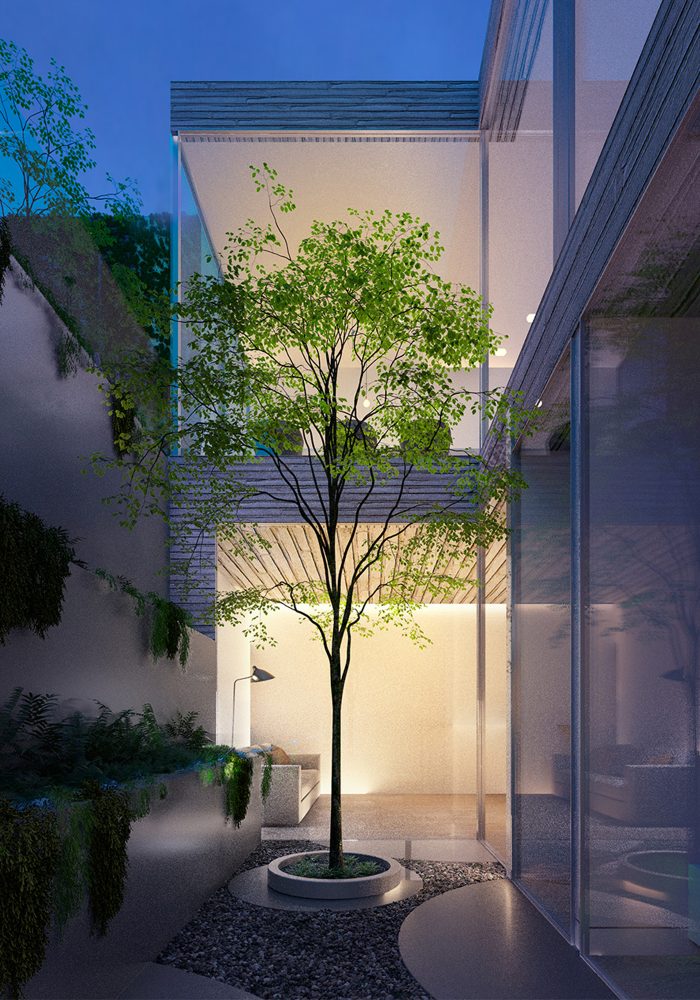Post-Pandemic Trends in Residential Architecture
At the time of writing, a coronavirus – or more specifically Covid-19 – has swept across the world, leaving only a handful of remote territories unaffected. Covid-19 is having a huge impact on all aspects of our lives. With so many of the world’s population now isolated at home, it brings to the fore the impact of the disease on residential architecture and construction.
As a result of the pandemic, we predict a shift in the general consciousness of the public to adapt the way they live in urban, suburban, or un-urban areas. With that in mind, below are our predictions of potential trends to evolve from a life in temporary isolation and the fear of a similar event occurring again in the future.
De-Urbanisation (or Re-Ruralisation of the Urban?)
The past century has seen a majority of the world’s population move from the countryside to the city. However, recent years have seen a shift away from dense, urban living in favour of more space and better value. With densely populated areas seeing the most rapid spread of Covid-19, we could see yet more people swapping their city apartments for suburban sanctuaries and rural retreats.
Similarly, home working and self-isolation has arguably been easier to accept for those in living in houses as opposed to those living in apartments as there is more opportunity for partitioning and separation between individual working and living areas.
Outdoor space – be it a garden, balcony, or roof terrace – is now more important than ever for two primary reasons. Firstly, the benefits of sunlight and fresh air are well known and can improve both physical and mental health. Secondly, we predict an increase in people’s desire to become more self-sufficient and therefore the ability to grow their own herbs and vegetables will likely increase. As a result, larger gardens in suburban areas may see a rise in demand. Alternatively, those in the city may seek to bring nature to them via the creation of additional roof terraces and balconies.
The Great Indoors
Open plan living has been incredibly popular over the past few decades and will likely remain that way – pandemic or not. However, how those spaces are used and divided will likely need to change. The partitioning of floor plans has become increasingly important in recent weeks to allow for designated spaces of work, schooling, relaxation or otherwise. As will likely be the case with commercial and office space, the need for flexibility is now heightened.
The impact of Covid-19 will also likely see changes in the priority we put on certain rooms and functions. Up until now, a home office was perhaps viewed as a luxury or something to do with that spare bedroom. However, predictions show a sharp increase in home working even after the pandemic has subsided and so we expect to see home offices – and better yet garden studios – specifically requested in client briefs from now on rather than simply being an optional extra.
Due to an escalation in the stockpiling of long-life goods and the public’s now heightened desire to be prepared, we also anticipate further demand for built-in storage space and pantry cupboards/rooms. Designated entrance lobbies allowing occupants to shed their outdoor wear to prevent bringing potentially harmful bacteria inside may also become a popular request.
As social distancing and restrictions on activities such as watching a film at the cinema, eating out or going to the pub take their toll, some may choose to bring those functions into their own homes. Home cinemas, bars, entertainment areas and more professional kitchens may increasingly find their way onto a client’s wish lists.
The Rise of the Machine
As with any major world event in recent history, technology is usually at the forefront of how humanity responds to adversity. Developments in air filtration kits, self-cleaning surfaces, bacteria killing UV lighting and the like were already in development but may now be expedited to cater for a growing demand to increase hygiene within the home.
Likewise, we have recently seen a sharp increase in the use of voice activated automation and smart home systems. This will increase exponentially in the post-pandemic world. We also predict a rise in contact-free fittings such as voice activated lighting or door movement sensors rendering traditional light switches, lift buttons, door handles and the like redundant in fear that they may spread unwanted bacteria.
AV – or Audio Visual – demands will also increase as more people choose to work from home or choose to future-proof their current systems in the event of another period of lockdown. Almost overnight, video calls with friends, family members colleagues have become commonplace and subscriptions to media streaming services and online shopping outlets have expanded beyond all expectations. As such, a fast and reliable internet connection is perhaps now more of a priority than some of the more traditional utilities and we also anticipate that the development of satellite internet will be expedited making it widely available and more affordable to the general public.
Finally, an increase in demand for self-sufficiency will likely see an increase in the use of geothermal and solar technologies allowing properties to effectively be taken off-grid and reduce reliance on standard suppliers who may now be seen as vulnerable when demands are high.
The above trends are likely to subtly manifest themselves in our subconscious and evolve over time rather than impose themselves on our immediate design process. However, in an ever-changing world at an ever-changing time, we would be naïve to think the impact of Covid-19 will not influence the way we live as a society and therefore the way we design our homes. History has shown that silver linings emerge from the dark clouds of adversity and we believe that the current pandemic presents an opportunity for architects and end users alike to ultimately improve the way we live and maximise the enjoyment of our homes.



